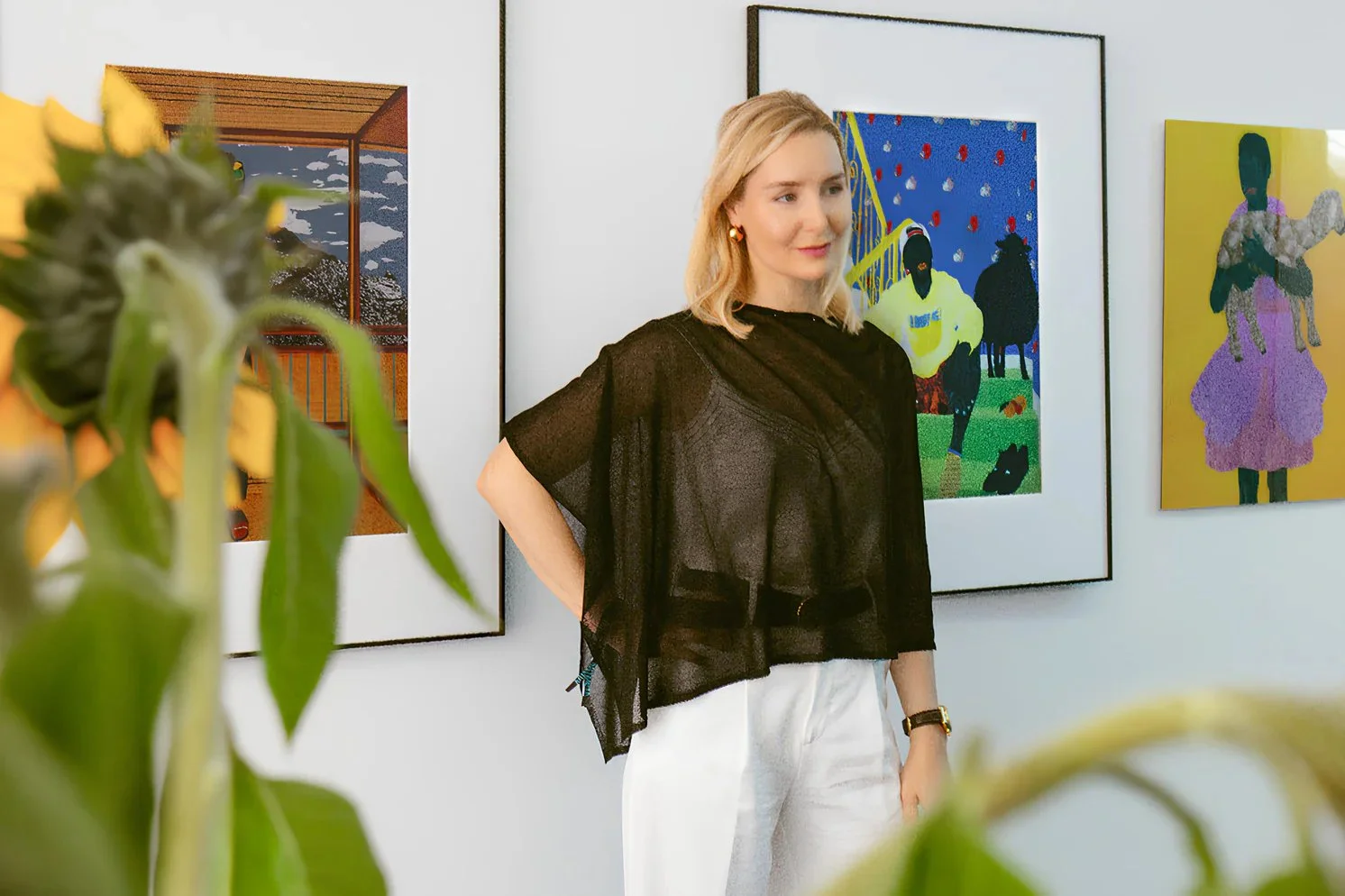Exploring the future of digital creativity: Kate Vass on art, tech, and innovation
During Digital Art Mile, Kate Vass sat down with our partner InkPoster—the creators of the world's first color ePaper art poster—to discuss the future of digital creativity, art tech, and innovation. In their conversation, Kate reflected on her experience working at the forefront of digital art, explored the trends that are reshaping the industry, and shared why she believes InkPoster is a groundbreaking project for making art more accessible, sustainable, and relevant in today’s rapidly evolving cultural landscape.
inkposter.com, July 15, 2025
Kate Vass, art-tech visionary and founder of Zürich’s Kate Vass Galerie, has dedicated her career to elevating digital art and supporting emerging talents. Her gallery was one of the world’s first spaces devoted entirely to showcasing digital creativity.
In our conversation, which took place during InkPoster’s participation at Digital Art Mile, Kate Vass reflects on her experience working at the forefront of digital art, discusses the trends redefining the industry, and explains why InkPoster is such an essential project for making art more accessible and relevant today.
Searching for Kandinskys and Warhols of our times
Art has always been part of my life – not just visual art, but music, theatre, architecture, and performance. Later, through my engagement with finance, crypto, and DeFi, I started questioning the traditional frameworks that govern value, ownership, and systems of trust. That’s when I started to see that this technology could somehow reflect what is going on in the art world.
As a collector, I have looked at thousands of artworks while collaborating with different galleries and collectors. That's when I started to question myself, who are the Kandinskys and Warhols of our times? And that's when I got captivated.
At first, I think it was more like a passion to find the answers – to discover who reflects on our times. Then it became a mission: to represent artists working with AI, machine learning, code, algorithmic art, or other cutting-edge technologies.
At some point, opening up my own gallery was about not repeating the same models in all senses, but finding new types of relationships that you can build with artists. A new type of art that you can actually show, a new type of relationship – how you can engage with the community, and a new generation of collectors. I think that's where art and tech played a vital role.
Value of digital art
What’s the core of a creative tool if it's natively digital? How can I, as a collector, engage with this art on a different level, not just by transferring the file through Dropbox or USB, or by playing the videotape in the recorder?
With blockchain, we found many answers – at least for me as a gallerist. You could prove provenance, prove the digital scarcity of a file, and engage with a community in a very fast way.
It captivated me because, from what I've seen in traditional finance and other sectors, it felt like the traditional models, whatever sector we are talking about, would no longer work as well as they used to work. We have to look into the future. And the future is technology and innovation.
From screen to gallery wall
I think the physical presentation of digital works in analog spaces is very important. When we are talking about something new – whether it's a technology or anything that’s emerging – if people don't know it, they tend to fear what's coming. So in order to educate and to build trust, you have to be there, you have to be open, and you have to meet and greet. You have to be present for the audience so that they can build the trust together with you.
The dialogue, the real conversation tête-à-tête, is very important. Even though it's natively digital work, it doesn't have to be presented just purely digital. It can be performance. It can be interactive work. It can be an animation. It can be on a screen. It can be presented as a print. It can be on a canvas. It depends on the whole idea and the concept of the work. It can also be just light and the presence of the moment, and the perception of how you see this work in this particular moment.
Turning emerging talents into established artists
Since I was the only one who was truly interested in this space from the beginning, I had to find all the artists, approach them, and collect them. First of all, you have to support the artist that you believe in. That's an important part of a journey.
For me, every collaboration I've made, every exhibition I curated, has been very important, and it's like a time capsule. I think it's also a milestone for many artists, because we gave birth to many emerging artists, and now they're established artists.

